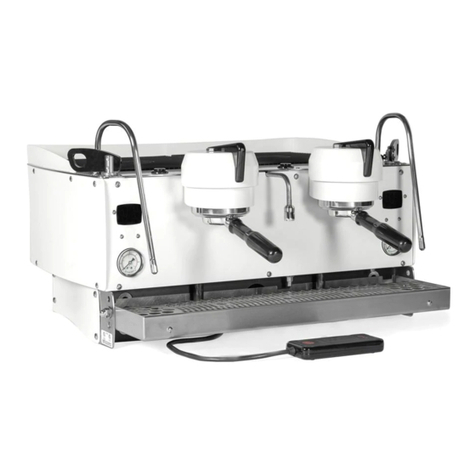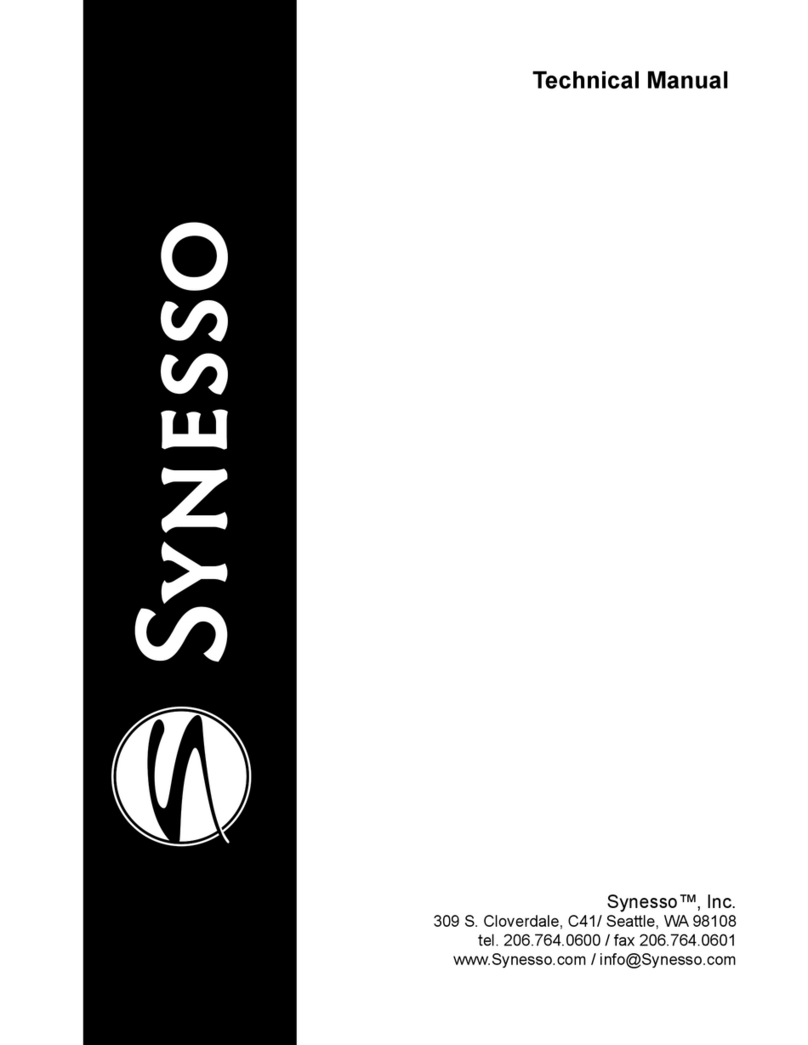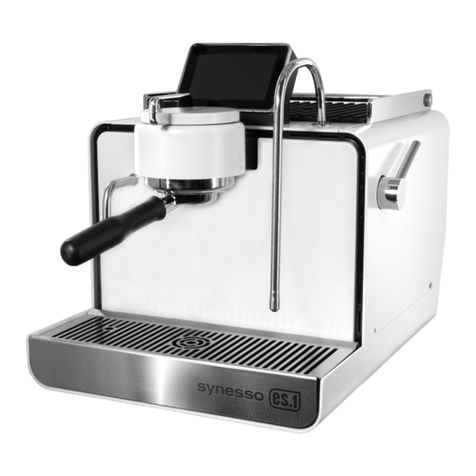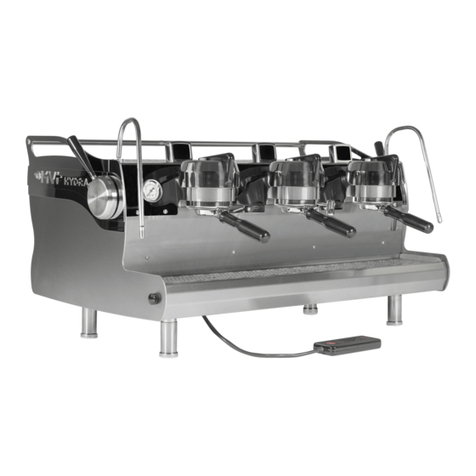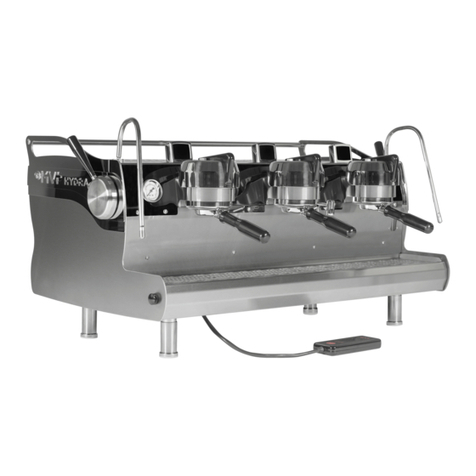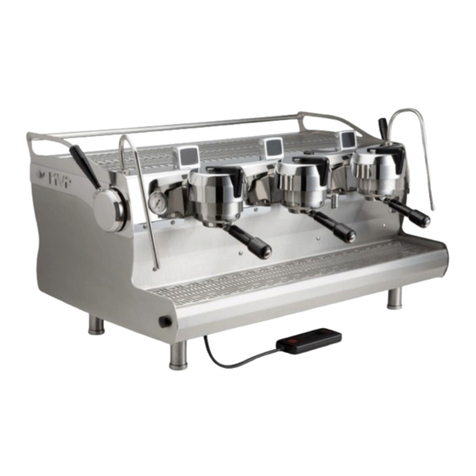
7
WARRANTY
Limited One-Year Non Wearing Parts Warranty
Synesso™, Inc and/or your Distributor warrants to the original purchaser that Synesso™espresso machines are free from
defects in materials and workmanship under normal use and service for the period commencing upon the date of shipping
and continuing for 12 months from the original date of shipment. Synesso™will make a good faith effort for prompt
correction or other adjustment with respect to any non-wearing part that proves to be defective within the limited warranty
period. This Limited Warranty is conditional upon proper use of the machine by the purchaser.
This Limited Warranty does not cover defects or damage resulting from: accident, misuse, abuse, shipping damage,
neglect, unusual physical, electrical or electromechanical stress, unauthorized customer modifications or improper water
filtration.
Proper water filtration and regular filter changes are a requirement to keep your factory warranty valid and your machine
functioning properly. It is highly recommended that you contact a professional water filtration specialist in your area and
have your water tested to determine the proper filtration system. It is important to note that many municipalities change
their water sources throughout the year, so additional water tests may become necessary.
Water Standards to keep your warranty valid:
Total Dissolved Solids (TDS) 30 to 200 ppm (parts per million)
Total Hardness - in ppm Less than 85 ppm
Total Hardness – in grains 3 to 5 grains (divide ppm by 17.1 to get grains)
pH 6.5 to 7.9 pH
Chloride 0 ppm – Chloride can damage the boilers
Total Alkalinity Less than 100 ppm
Chlorine 0 ppm
Iron 0 ppm
In Synesso’s™ experience, Everpure Claris and Cirqua formulator systems can
produce a result that can damage the Synesso™ boilers. Use of either of these
systems is discouraged, and will void the water-related parts of the machine
warranty.
Any part which is determined to be defective in materials or workmanship should be returned to Synesso™ or to an
authorized service location, shipping costs prepaid, as Synesso™ designates. Synesso™ may repair or replace the
product or part with new or factory refurbished equipment at Synesso’s™ sole discretion. If the product or part is
determined to be defective and in compliance with the Limited Warranty conditions, the replacement part or product will be
returned to the purchaser with shipping prepaid **.
Many jurisdictions have codes and regulations governing sales, construction, installation, and/or use of products for
certain purposes, which may vary from area to area. While Synesso™ attempts to assure that its products comply with
such codes, it cannot guarantee compliance and cannot be responsible for how the product is used or installed.
Synesso’s™ liability is limited to the purchase price of the product and Synesso™ shall not be held liable for damages that
extend beyond the product itself. Synesso’s™ liability of consequential, incidental damages, indirect or direct damages
for personal injury, inability to properly use this product, loss of business profits or interruption to business is expressly
disclaimed.
** Regarding equipment sold or residing outside the United States: purchaser maybe required to pay for the shipping
and associated costs for warranty parts, repairs and services. Please contact your local distributor to resolve the issue
regionally, if possible.
